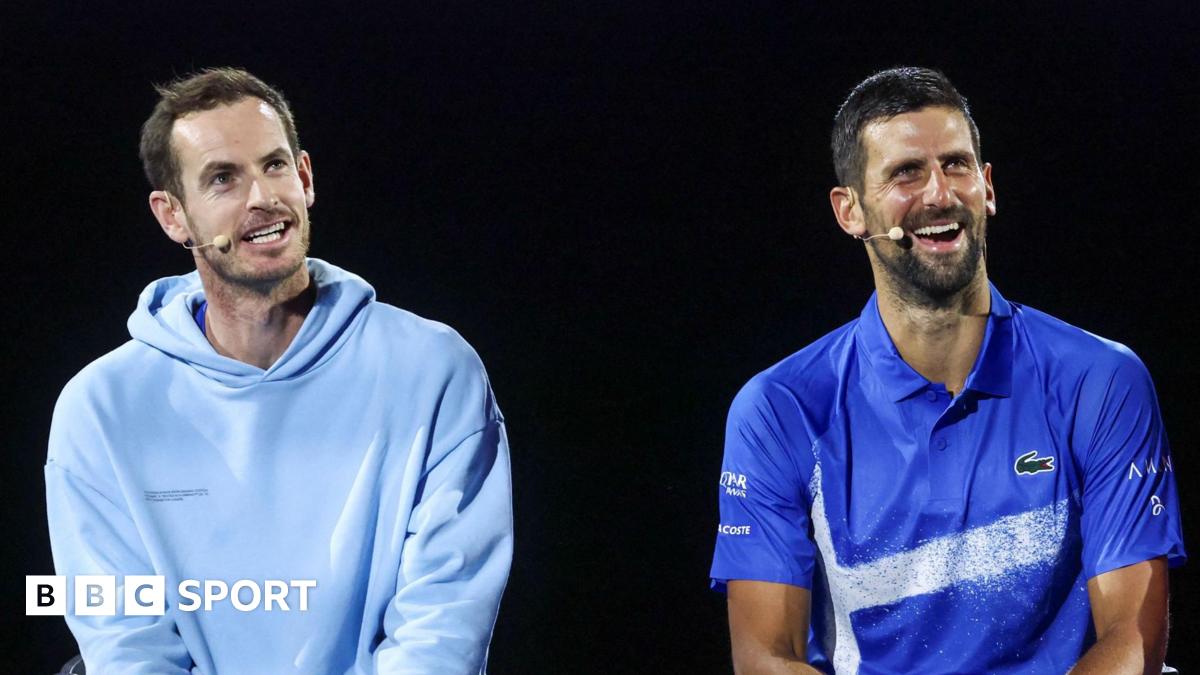Tennis’ rules and scoring could change in the future – but how would that change the sport?

In 2023, The Athletic asked players, coaches and other figures involved in the sport about the one thing they would change about tennis. From having one serve per point and mixing up Grand Slam match lengths to doing away with advantage points and letting fans talk and move to their hearts’ content, the innovations largely focussed on their logistical or most immediate impacts.
Having one serve puts more pressure on the server; playing fewer sets shortens matches and makes scheduling less uncertain; letting fans talk and move during play adds noise and atmosphere. But what would all these things do about tennis, the sport? Which kinds of players would thrive if these changes came about and which would struggle? What would points, games, sets and matches start to look like, tactically?
As the 2025 season revs into life, The Athletic’s tennis team discusses some of their own views on innovation — many of which have kinship with the players’ ones, since there’s only so much to change — and how changing tennis would ultimately… change tennis.
If matches are too long now, what would happen when you shorten them?
James Hansen: What, in your opinion, is the biggest on-court issue with tennis as it is played now?
Charlie Eccleshare: It’s too long.
Matt Futterman: You mean Grand Slam tennis is too long, or…?
Eccleshare: It’s become completely out of control. Tennis was invented as a sport in which sets last 20 minutes. I don’t think there are many sports in which the biggest unit in the scoring system has tripled in duration — an hour for a set is completely unremarkable now, but the format has remained the same while the time, and with it the physicality and tactics required to win, have completely changed. I think that is really interesting whether you think it’s a problem or a hallmark of tennis. Personally, I think it’s too much.
Futterman: I go back to the Olympics (in July and August this year), which wants any given match or instalment in an event to last about two hours. Football, rugby, they’re shorter. American sports run longer with commercials but still around three hours, sometimes more. I feel like men’s Grand Slam matches are just way too long. And the question is how do you then manage the idea that the Grand Slams are supposed to be different, that the history separates them and that all the great men’s matches are five sets and all the women’s ones are three?
Hansen: Other sports do have staggered timeframes by prestige. Cricket has Tests, in which 90 overs or more are bowled per day for five days, all the way down to entire matches that are just 100 balls per innings. Snooker has more frames in its bigger matches. It’s true also that many, if not all, of the greatest men’s tennis matches of the last 30 years are five sets, but they were also memorable because of the players involved and the sustained level of performance over that length of time. There were also plenty of incredible three-set matches between the ‘Big Three,’ especially on clay. The general trend in matches getting longer means the physicality and fitness required to endure those matches is required of more players, not all of whom can sustain that quality. On the other hand, there are plenty of epic five-setters that go somewhat under the radar in the early stages of Grand Slams.
One of the arguments against three-set matches is that they are higher variance — there might be more upsets earlier in majors, which is exciting, but the later stages of tournaments might then not feature the best players. Of course, over time, what it means to be the ‘best’ would adjust to the format being played and the players most suited to that format would, in theory, rise to the top (or perhaps just stay there as now).
Jannik Sinner and Carlos Alcaraz at the 2024 French Open. (Emmanuel Dunand / AFP via Getty Images)
Eccleshare: Even the two best players in the men’s game, Jannik Sinner and Carlos Alcaraz, played a five-setter at the French Open this year and the quality was up and down; they played a five-setter at the 2022 U.S. Open and it was, at times, absurd. Some of the five-setters from the 2010s were almost unrelenting in their level, but now even in epic matches, you get lulls because players have to manage their bodies in the middle part of the match, especially if it goes 1-1 after two sets. If you played a match tiebreak on events outside of Grand Slams, for example, and then a full third set at majors, over time they would take on the weight of being a decider and players would adjust how they play those matches. Masters 1000s are satisfying. Women’s Grand Slam matches are satisfying. The women’s U.S. Open final (two sets) and Madrid final (three, with a tiebreak at the end) were two of the best matches of the year. Things would evolve.
Futterman: As with the 11 p.m. curfew at Wimbledon, give tennis players a deadline and they will generally get things done. If three sets became the norm, I think those variances would go away over time. Players will attack matches differently and the first set will become more important than it is now (in a Grand Slam).

GO DEEPER
Men’s grand-slam matches are 25% longer than in 1999. Does something need to change?
In tennis, players have two serves. What about just one?
Futterman: If we want to talk about doubles — not singles — I would have just one serve. If three-set everything might be too much variance, doubles — particularly men’s doubles — is currently way too low-variance. If you want more lead changes, you want more mystery, you want more break-point opportunities, it’s a simple change.
Eccleshare: It would give doubles another point of difference, even if a lot of the players would probably rail against it because it would feel like it’s introducing an element of randomness. Fans would be really curious to see how it affects the sport.
Hansen: The average second-serve points won by the top 50 on both tours last season was 52.4 percent for men and 46.8 for women. Having one serve would introduce trade-offs about speed and direction, which would only ramp up deeper into games and then sets. The curious thing might be that it would generate more rallies and actually elongate matches, especially if it were introduced to singles.
Futterman: I think a hybrid serve would become more valuable, being able to hit a proper kick serve, for example, that jumps up and away from the returner and prevents them from attacking. It might mean serves are actually more samey — and spot-serving would likely become more valuable. We saw Learner Tien hitting first serves under 100mph (160kmh) at the ATP Next Gen Finals but winning points easily because of their direction. I still think one serve in singles would be too far because it is just not that hard to return a ‘second’ serve on a singles court really effectively, especially in the women’s game. The court is pretty big still and the strings and rackets are really powerful.
Hansen: It seems like the common trade-off is between excitement and variance and then the longer-term impact of that variance. If you made all tennis across the ATP and WTA tours three sets and one serve, you would probably initially have more players having more opportunities to win big events, but it would be harder for tennis to build the kind of dynasties that made it a global product for such a long time. At the same time, players would tactically adjust and then things might settle down again. It would also fundamentally change how players are coached, which attributes are prized at junior level…
Eccleshare: The year 2002 sticks with me, because in both the men’s FIFA World Cup and then Wimbledon, there were loads of upsets early on. People loved it. But then come the quarterfinals, you’re kind of wishing you had the big nations/players back. Andre Agassi, Pete Sampras and Marat Safin all lost on the same day in the men’s singles draw that year and it was amazing, for a day, and then it felt odd further into the tournament. But that’s again about reconfiguring expectations, which would happen over time if changes were made.
Futterman: You might lose stars early in a Slam or two, or four or five, but you’d have them for a longer period of time because their bodies would be more intact.

Jasmine Paolini and Donna Vekic’s Wimbledon semifinal was one of the great three-setters of 2024. (Clive Brunskill / Getty Images)
Could the tennis scoring system have less advantage? And what about existing variants?
Hansen: Some events, including the ATP Next Gen Finals (and my county doubles leagues…) use no-ad scoring, in which a deciding point is played at deuce (40-40). When The Athletic asked players what they would change, Holger Rune was a big fan of introducing this. It adds some interesting tactical considerations and makes service leads more precarious, but also adds more variance, just like most of the proposed changes. Fond memories of a 7-5 set won on seven out of seven deciding points surface, but personally I think the scoring system is fine the way it is.
Futterman: If staying with doubles, I think the one-serve rule is better than this — just for putting less stock on a single point. But it’s used in American college tennis and, like the no-let rule, players just adapt to it.
Eccleshare: You’re 40-30 up, lose one point, and you’re break point down… It reduces ‘dead points’, but it’s also quite a lot. There’s so much tension and drama in a long deuce game that I don’t want to do away with that.
Futterman: Speaking of college tennis… Let the crowds be crowds. Players would figure it out.
Eccleshare: So many of these kinds of things, once they’re in, people figure them out. I also think players should never wear the same kit — and they should have ‘their’ kit, so a fan can go, “I like Player X, I want to buy their shirt.”
Hansen: One kind of approach that we see at team events — like the United Cup, Davis Cup, Billie Jean King Cup, but also exhibitions like the Laver Cup and Ultimate Tennis Showdown (UTS) — is twofold. One, putting microphones on the teams, but I question how frank someone is going to be in their tactics and discussion in a major as opposed to one of these… And two, just having separate types, so to speak, of tennis as exists with UTS. If quote-unquote ‘normal’ tennis were to change, how would it change the existing variants?
Eccleshare: I expect Patrick Mouratoglou, the main figure behind UTS, would see it as a vindication. He’d love an event of its kind on the tour, but that would be at odds with the tennis schedule and he’s adopted a “co-exist, not compete” attitude of late.
Futterman: It’s worth remembering that most innovations of late have been limited to fiddling with the final sets in Grand Slams only, going from win-by-two games to the 12-12 rule at Wimbledon to the 10-point tiebreak, which was only trialled in 2022 — 2022! Changes of bigger magnitude than this will always feel glacial. But the debates are fun.
Hansen: We’re all in thrall to technology anyway. It’s courts, strings and rackets that have helped get tennis to the place it is now as much as the players hitting the balls. Perhaps only advances in technology that go the other way — or just using the same ball across swings — will make tangible impacts on the sport at this stage.
(Top photo: Novak Djokovic; Glyn Kirk / AFP via Getty Images)
Related
Top 10 reset: How the WTA’s best are shaping up…
We're only two months into the 2025 Hologic WTA Tour season, but plenty of potential narratives are beginning to take shape -- albeit not n
How Novak Djokovic responded when told Indian Wells could name…
Novak Djokovic will continue his search for a 100th ATP Tour title at Indian Wells, having fallen well short at the Qatar Open.Djokovic was praised for his spo
Darren Cahill shares the mistake Andre Agassi used to make…
Darren Cahill is currently focusing on more success with Jannik Sinner, but it wasn’t too long ago when his main focus revolved around Andre Agassi.Agassi is
Novak Djokovic and Andy Murray to resume coaching partnership in…
Djokovic, ranked seventh in the world, hopes to play both Indian Wells and Miami for the first time in six years.The carrot is the chance of creating more histo













